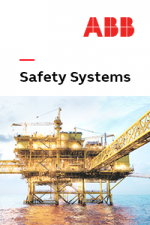- Russian Dam Disaster: Assessing the Cost of Failed Safety Practices
- Analyzing the Human Element of the Russia Dam Disaster
- Turbine 2: How a Track Record of Uncertainty Led to Disaster
- Russian Dam Disaster: A Reckoning for Bypassed Safety
- When Running People Past Their Breaking Point Effects Safety: The Bayer Crop Science Incid…
Russian Dam Disaster: Assessing the Cost of Failed Safety Practices
When disasters like the Sayano–Shushenskaya hydroelectric power station collapse in Khakassia, Russia, occur, it is difficult to get past the overpowering tragedy of 75 people losing their lives and 40 other sustaining injuries.
The only way to draw positives from such an incident is to learn from the experience so that the same mistakes never happen again.
When Turbine 2 broke apart violently at the power station, death and injury were not the only tragic outcome. The flooding of the turbine hall and engine room, and a collapsed ceiling damaged or destroyed 9 of 10 turbines resulting in over a billion dollars in damage.
After the incident other problems needed to be addressed. The penstocks had to be shut down due to repairs, hence the nearby river waters were forced to pass through the spillway. The spillway was not designed to sustain large amounts of water during the winter months because huge blocks of ice would form and partially block the normal flow. The problem was later resolved by running some of the restored units and by construction of in-rock bypass channels, resulting in more additional costs for the plant.
In addition to this, transformer oil was spilled. The oil was used as the coolant, but spilled into the river when the transformers exploded. At least 40 tons of transformer oil spread over 80 kilometers downstream of the Yenisei River. This spill resulted in the killing of tons of trout in two fisheries downstream and also affected other wildlife by the river.
The total cost of restoring only the power plant engine room was around $1.3 billion. That figure does not take into account the turbine costs and related payouts to the victims and their families and to injured workers.
Optimizing safety designs
During the accident, the plant’s automatic safety system failed to both shut down the turbines and to close the penstock entry gates at the top of the dam. In both cases the failure resulted from short circuits that led to a power blackout.
The system has now been improved so that the gates close, even in the event of a power loss. The gates can now also be controlled manually from the main control room. In addition, emergency backup power has been installed in case the main power supply fails.
The power plant is looking to install a vibration monitoring system on each of the turbines. The system will be programmed to follow specific rules and strict operating parameters so that a faulty unit is no longer dependent only on manual interaction to shut down when turbine performance begins to falter. The upgraded system can act in an emergency shutdown mode in case of excessive vibrations. The turbines will not be allowed to operate in the “not recommended” zone.
In addition, turbine installation and maintenance procedures should be monitored, accepted and validated by the primary equipment manufacturers and not only by the power plant management, as was the case before. The manufacturers are more knowledgeable when it comes to identifying and correcting defects in the systems. The directors and management board should also continue to emphasize safety education and training in order to make sure they never neglect and ignore even small problems within the operation. They should ensure the turbines are placed offline at the first indication of any abnormalities.
Most importantly, the directors of the plant will need to place a higher value on human and equipment safety than on the economics of power production. Staff should be given sufficient training and guidelines to handle any emergency situations…and that includes delegating the authority needed to make crucial decisions in the absence of a supervisor.
Finally, a fully funded extensive inspection, repair and maintenance program should be put into place. The inspection process should also involve independent third-party organizations familiar with industrial safety hazard management.
To better understand how some of the various mistakes that occurred over time should have been addressed and prevented, click here . To learn more about steps to take for ensuring better plant and control systems process safety click here.


